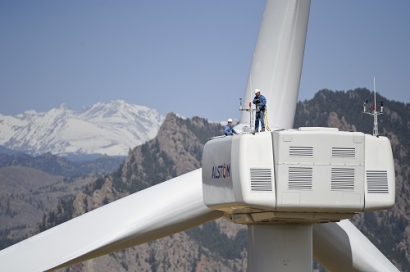
Worker safety also comes up in association with renewable energy. More than a decade ago, researchers from the Medical College of Wisconsin and Duke University Medical Center published an analysis of renewable energy worker safety versus the occupational hazards for similar work linked to fossil fuels, such as coal mining. They concluded that renewable energy could prevent more than 1,300 worker deaths over the next decade.
Here's a look at whether renewable energy can still improve worker safety, and what companies can do to further keep their renewable energy workforces from harm.
The Renewable Energy Industry Is Still Substantially Safer
Given that the previously cited statistic is no longer current, people understandably wonder if the renewable energy sector is still safer for workers than jobs related to fossil fuels. Statista showed the 2018 worldwide mortality rate by energy source and measured the deaths per thousand terawatt hours. The site also calculated the death rates in terms of extraction methods, when applicable, as well as deaths associated with using the energy.
The coal sector had the highest fatality rate by far, at 100,000 per terawatt hour. Oil was next on the list with 36,000, followed by natural gas coming in at 4,000. Hydropower was reportedly the most dangerous renewable, showing 1,400 deaths per terawatt hour. Rooftop solar had 440 deaths, with wind totaling 150 deaths per terawatt hour.
People in the renewable energy sector encounter some of the same workplace dangers as those in other industries. However, certain factors, such as the height of wind turbines, may increase accident likelihood.
Safety Assessments Can Reveal Weak Spots
Since the renewable energy sector is like any other in that it poses occupational threats to workers, people in positions of authority must assess where problems lie and take decisive steps to minimize risks. Working with a consultant that specializes in environmental, health and safety matters is an excellent solution. Professionals can assist by performing audits or helping clients make plans to boost workforce safety.
Then, once it becomes clear where room for improvement exists, companies can determine what to do. There is no single, guaranteed way to increase safety in every case. The best way forward is to become aware of risks and commit to reducing them.
Specialized Training to Keep People Safer
Several years ago, multiple groups in the wind energy sector took another approach to increase safety. They collaborated to create standardized safety training that encompassed four main areas: Working at heights, manual handling, fire awareness and first aid.
More recently, there has been an even stronger push towards standardized safety for wind power employees. Offering a consistent type and amount of training gives peace of mind to people who may hire those employees or need their services at several worksites.
Moreover, a paper presented at a 2017 conference confirmed the usefulness of providing specialized training modules to renewable energy sector workers to keep them safer. Researchers gave wind turbine workers educational content related to their careers and found that the information contributed to behavioral changes at job sites that could make injuries less likely to happen.
The research also found that some design shortcomings, like emergency stop buttons on turbines located in hard-to-reach places, are outside of employers' control. The results show that although training undoubtedly helps, it is not a cure-all.
Technology Supports Safety for Renewable Energy Workers
There are also technological solutions that promote worker safety in the renewable sector. For example, BeBa Energy is a United Kingdom-based renewable company that improved safety for lone workers installing solar panels. They did so by switching to a mobile app to replace the traditional buddy system. The app gives the real-time location of all site workers and includes a panic button feature that people can use if things go wrong, plus an automatic fall detection capability.
Another company in the United Kingdom uses an app that syncs a worker's smartphone with the telecommunications devices embedded in wind turbines. That approach allows workers to send distress signals if they are injured or ill. The application also has features that help workers reduce risks.
Awareness and Action
The renewable energy sector has unique risks, but it's overall much safer than the fossil fuel industry. It's essential to combine risk awareness with action to keep people as safe as possible while renewable energy continues to gain ground.

